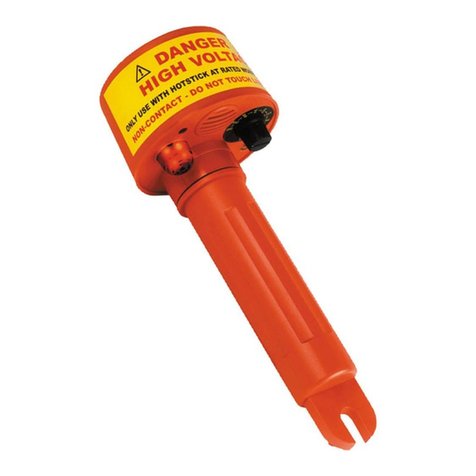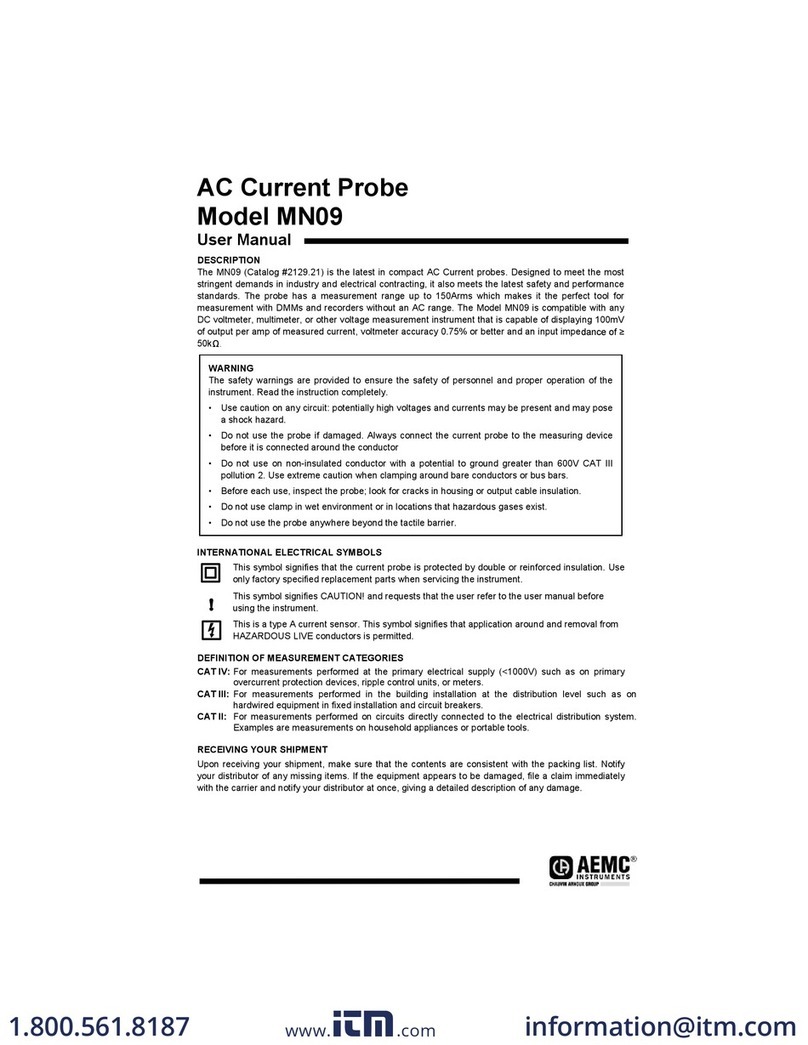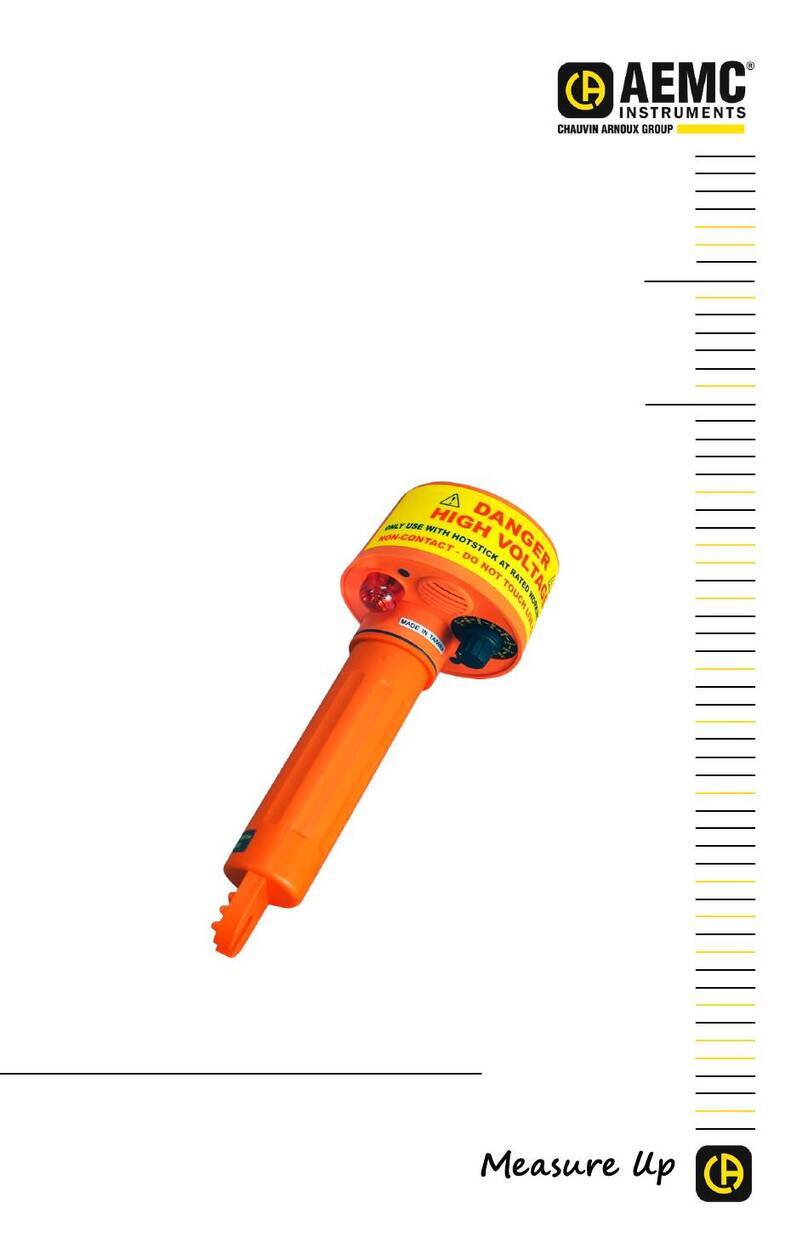
4
GroundFault/LeakageDetectorModel2620
1.2 Definition of Measurement Categories
CAT II: For measurements performed on circuits directly connected to
the electrical distribution system. Examples are measurements
onhouseholdappliancesorportabletools.
CAT III: For measurements performed in the building installation at
the distribution level such as on hardwired equipment in xed
installationandcircuitbreakers.
CAT IV: For measurements performed at the primary electrical supply
(<1000V) such as on primary overcurrent protection devices,
ripplecontrolunits,ormeters.
1.3 Receiving Your Shipment
Uponreceivingyourshipment,makesurethatthecontentsareconsistent
withthepackinglist.Notifyyourdistributorofanymissingitems.Iftheequip-
mentappearstobedamaged,leaclaimimmediatelywiththecarrierand
notifyyourdistributoratonce,givingadetaileddescriptionofanydamage.
Savethedamagedpackingcontainertosubstantiateyourclaim.
1.4 Ordering Information
Ground Fault/Leakage Detector Model 2620................... Cat. #2125.52
Includes user manual and warranty card.
1.4.1 Accessories and Replacement Parts
Adapter–4mmNon-insulatedforSafetyLeads................. Cat. #1017.45
(Converts male safety plugs to non-shielded male plugs)
ArticialNeutralModelAN-1................................................ Cat. #1971.01
Includes instrument with soft carrying case; eight 1.5 V “AA” batteries; four 5 ft (1.5 m) color-
coded leads (green, red, black, blue) and user manual.
Bag–LargeClassicToolBag .............................................Cat. #2133.71
Bag–SmallClassicToolBag............................................. Cat. #2133.72
Lead–Replacement ...........................................................Cat. #2950.29
Set of 4 Color-coded 5 ft Safety Leads (4mm straight banana plugs on both ends) for use with
the Articial Neutral Model AN-1. Rated 600V CAT IV































